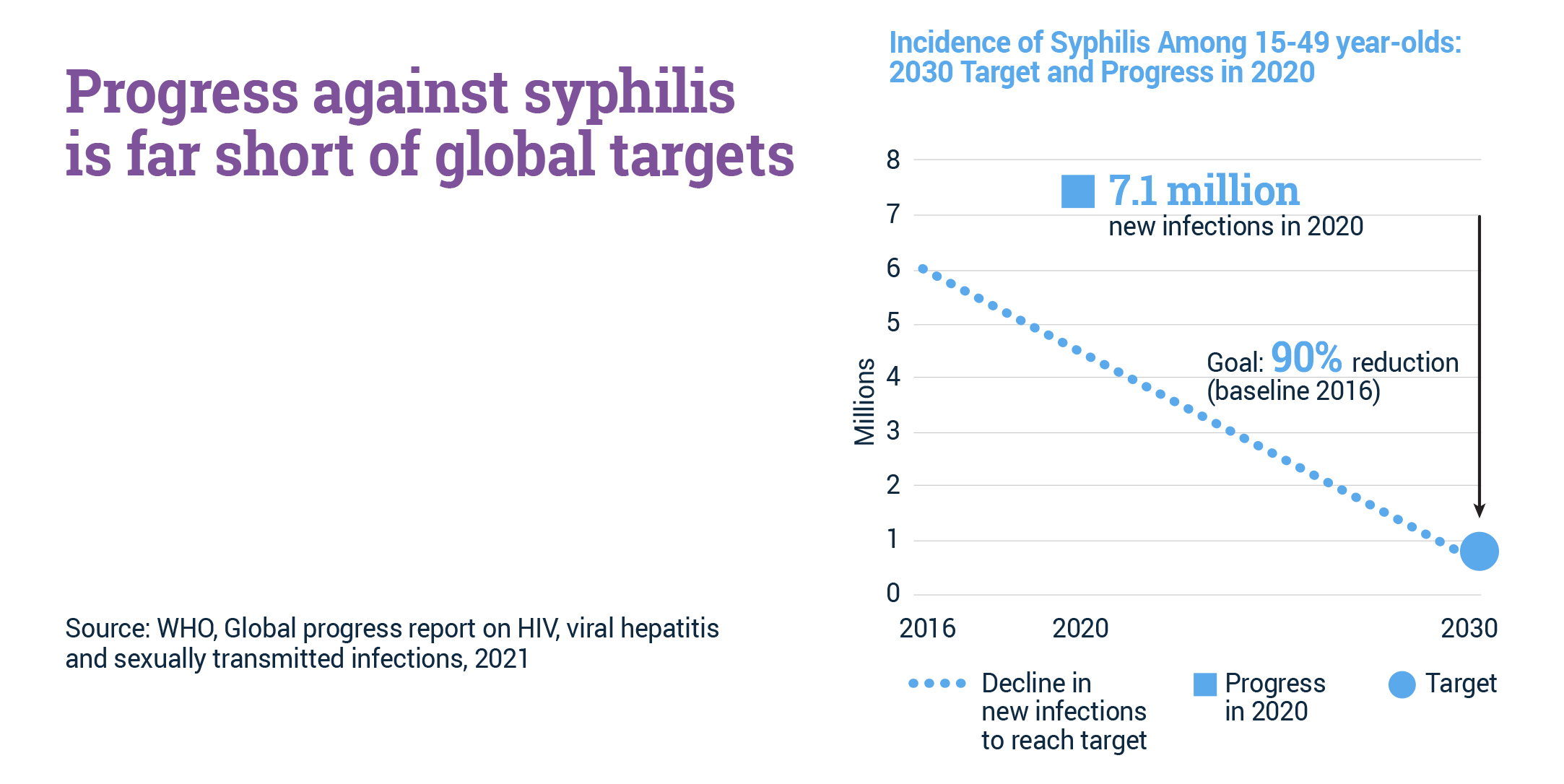STI Synopsis
Syphilis
Syphilis is the second leading cause of stillbirth globally and, if left untreated, can cause brain damage, blindness and paralysis in adults
Syphilis is caused by a helically coiled bacteria, Treponema pallidum (TP) and can be treated with antibiotics. Infections can progress through stages and last from weeks to years, depending on when the infection is detected and treatment. Syphilis can lead to serious and permanent problems like brain damage, blindness and paralysis, as well as prematurity, low birthweight, neonatal death, and infections in newborns.
Vaccines
A successful proof-of-concept study in an animal model suggests that a vaccine to prevent syphilis infection is feasible. Researchers are currently pursuing a two-pronged approach that would reduce syphilis transmission and also prevent the dissemination of syphilis bacteria through the bloodstream, to stop it from causing congenital infections and neurological damage.

WHO’s Roadmap identifies additional important next steps, including:
- Attracting new investigators to syphilis vaccine research, which is currently being conducted by only a limited number of scientists
- Continued sequencing of circulating syphilis strains to provide information on the cross-protective potential of selected vaccine targets
- Studies investigating immune correlates associated with protection from syphilis
- Mathematical modeling to predict the global health impact of a syphilis vaccine
Testing
Syphilis cannot be easily cultured, and testing includes direct detection using darkfield microscopy or blood tests that detect antibodies against TP (also known as treponemal tests) or antibodies against antigens that are produced by individuals in response to a syphilis infection (also known as, non-treponemal or non-TP test). Darkfield microscopic tests are often not available in resource-limited settings because they require a special microscope, and specialized training.
Therefore, TP and non-TP serological testing are used to screen and confirm syphilis infections. Non-TP tests are useful in identifying recent syphilis infections, monitoring the progression of syphilis, and evaluating response to treatment. Because TP tests can be positive for years with or without treatment, they are not recommended to evaluate response to therapy, relapse, or reinfection.
A majority of the diagnostics currently available to detect syphilis are laboratory-based. However, there is at least one near-point of care (POC) non-TP test. In recent years, more TP POC and near-POC tests have become available. Even though TP tests cannot distinguish between active and post-treated infections, they are still used to treat syphilis infections in resource-limited settings as the potential risk of over-treatment is more acceptable than complications that arise from non-treatment of syphilis.

An estimated 7 million syphilis infections occur each year, including nearly 1 million among pregnant women. These infections result in more than 350,000 adverse birth outcomes, including 200,000 stillbirths and newborn deaths.
Syphilis can lead to serious and permanent problems like brain damage, blindness and paralysis, as well as prematurity, low birthweight, neonatal death, and infections in newborns.
Syphilis can be cured with a single injection of antibiotics, but many people with syphilis have no immediate symptoms and do not know they are infected and need testing and treatment.
Cameron CE. Syphilis Vaccine Development: Requirements, Challenges, and Opportunities. Sex Transm Dis. 2018 Sep;45(9S Suppl 1):S17-S19. doi: 10.1097/OLQ.0000000000000831.